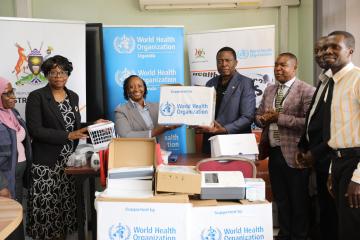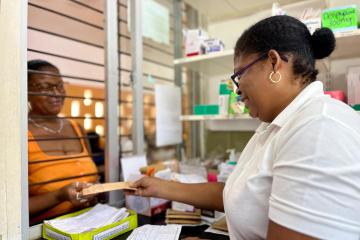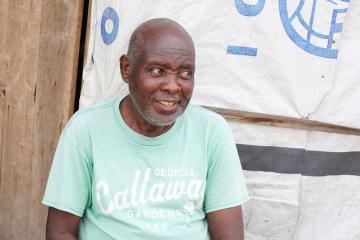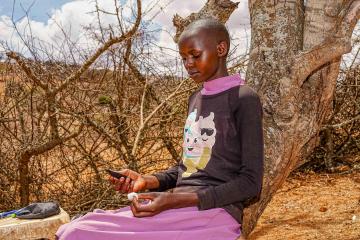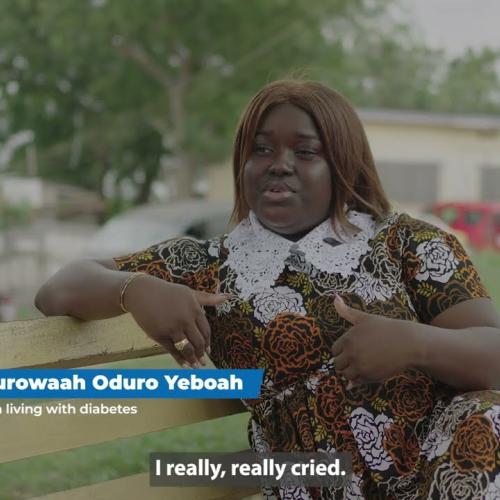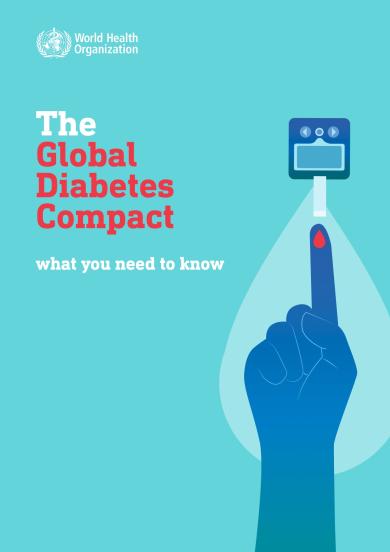Factsheet
Key Facts
- Globally, the number of people living with diabetes rose from 200 million in 1990 to 830 million in 2022. The global prevalence of diabetes among adults aged 18 and above has more than doubled, increasing from 6.8% in 1990 to 14.1% in 2022[1],[2].
- Prevalence has been rising more rapidly in low- and middle-income countries than in high-income countries.
- In the WHO African Region, the prevalence of diabetes among adults aged 18 and above has surged from 6.4% in 1990 to a staggering 10.5% in 2022, nearly doubling in just over three decades[3],[4].
- The number of adults aged 18 and above living with diabetes in Africa has increased from 12 million in 1990 to 30 million in 2010 and reached 54 million in 2022[5],[6].
- In the African Region, only 26.1% of adults aged 30 and above diagnosed with diabetes receive treatment, leaving a staggering gap of over 34 million people living with diabetes who remain untreated[7],[8].
- Diabetes is a major cause of blindness, kidney failure, heart attacks, stroke and lower limb amputation1.
- In 2021, diabetes and kidney disease due to diabetes caused over 2 million deaths globally. In addition, around 11% of cardiovascular deaths were caused by high blood glucose1.
- In the African region, premature deaths from diabetes (defined as deaths occurring before the age of 70) stands at 58%, higher than the global average of 48%1.
- Almost half of all deaths attributable to high blood glucose occur before the age of 70 years1. WHO projects that diabetes will be the 7th leading cause of death in 2030 2.
- Healthy diet, regular physical activity, maintaining a normal body weight and avoiding tobacco use are ways to prevent or delay the onset of type 2 diabetes1.
- Diabetes can be treated and its consequences avoided or delayed with diet, physical activity, medication and regular screening and treatment for complications1.
- People with diabetes are more likely to develop active TB disease and become sick once infected with TB germs than people without diabetes.
[1] World Health Organization.Global health Observatory. Diabete: Prevalence and treatment from 1990 to 2022. WHO; 2024. Accessed February 16, 2025. https://www.who.int/data/gho/indicator-metadata-registry/imr-details/761
[2] NCD Risk Factor Collaboration (NCD-RisC). Worldwide trends in diabetes prevalence and treatment from 1990 to 2022: a pooled analysis of 1108 population-representative studies with 141 million participants. Lancet 2024. Available online at: https://doi.org/10.1016/S0140-6736(24)02317-1
[3] World Health Organization.Global health Observatory. Diabete: Prevalence and treatment from 1990 to 2022. WHO; 2024. Accessed February 16, 2025. https://www.who.int/data/gho/indicator-metadata-registry/imr-details/761
[4] NCD Risk Factor Collaboration (NCD-RisC). Worldwide trends in diabetes prevalence and treatment from 1990 to 2022: a pooled analysis of 1108 population-representative studies with 141 million participants. Lancet 2024. Available online at: https://doi.org/10.1016/S0140-6736(24)02317-1
[5] World Health Organization.Global health Observatory. Diabete: Prevalence and treatment from 1990 to 2022. WHO; 2024. Accessed February 16, 2025. https://www.who.int/data/gho/indicator-metadata-registry/imr-details/761
[6] NCD Risk Factor Collaboration (NCD-RisC). Worldwide trends in diabetes prevalence and treatment from 1990 to 2022: a pooled analysis of 1108 population-representative studies with 141 million participants. Lancet 2024. Available online at: https://doi.org/10.1016/S0140-6736(24)02317-1
[7] World Health Organization.Global health Observatory. Diabete: Prevalence and treatment from 1990 to 2022. WHO; 2024. Accessed February 16, 2025. https://www.who.int/data/gho/indicator-metadata-registry/imr-details/761
[8] NCD Risk Factor Collaboration (NCD-RisC). Worldwide trends in diabetes prevalence and treatment from 1990 to 2022: a pooled analysis of 1108 population-representative studies with 141 million participants. Lancet 2024. Available online at: https://doi.org/10.1016/S0140-6736(24)02317-1
Diabetes is a chronic disease that occurs either when the pancreas does not produce enough insulin or when the body cannot effectively use the insulin it produces. Insulin is a hormone that regulates blood sugar* . Hyperglycaemia, or raised blood sugar, is a common effect of uncontrolled diabetes and over time leads to serious damage to many of the body's systems, especially the nerves and blood vessels**.
In 2022, 10.5% of adults aged 18 years and older in the WHO African Region had diabetes. Alarmingly, more than half of those with diabetes were unaware of their condition, and over 34 million people living with diabetes remained untreated.
* Defined as fasting blood glucose equal to or higher than 7 mmol/L, or on medication for raised blood glucose, or with a history of diagnosis of diabetes.
** High blood glucose is defined as a distribution of fasting plasma glucose in a population that is higher than the theoretical distribution that would minimize risks to health (derived from epidemiological studies). High blood glucose is a statistical concept, not a clinical or diagnostic category.
Type 1 diabetes (previously known as insulin-dependent, juvenile or childhood-onset) is characterized by deficient insulin production and requires daily administration of insulin. The cause of type 1 diabetes is not known and it is not preventable with current knowledge.
Symptoms include excessive excretion of urine (polyuria), thirst (polydipsia), constant hunger, weight loss, vision changes and fatigue. These symptoms may occur suddenly.
Type 2 diabetes (formerly called non-insulin-dependent or adult-onset) results from the body’s ineffective use of insulin 3. Type 2 diabetes comprises the majority of people with diabetes around the world, and is largely the result of excess body weight and physical inactivity.
Symptoms may be similar to those of Type 1 diabetes, but are often less marked. As a result, the disease may be diagnosed several years after onset, once complications have already arisen.
Until recently, this type of diabetes was seen only in adults but it is now also occurring increasingly frequently in children.
Gestational diabetes is hyperglycaemia with blood glucose values above normal but below those diagnostic of diabetes, occurring during pregnancy 4. Women with gestational diabetes are at an increased risk of complications during pregnancy and at delivery. They and their children are also at increased risk of type 2 diabetes in the future.
Gestational diabetes is diagnosed through prenatal screening, rather than through reported symptoms.
Impaired glucose tolerance (IGT) and impaired fasting glycaemia (IFG) are intermediate conditions in the transition between normality and diabetes 3. People with IGT or IFG are at high risk of progressing to type 2 diabetes, although this is not inevitable.
Over time, diabetes can damage the heart, blood vessels, eyes, kidneys, and nerves:
- Adults with diabetes have a 2-3-fold increased risk of heart attacks and strokes 5.
- Combined with reduced blood flow, neuropathy (nerve damage) in the feet increases the chance of foot ulcers, infection and eventual need for limb amputation.
- Diabetic retinopathy is an important cause of blindness, and occurs as a result of long-term accumulated damage to the small blood vessels in the retina. 2.6% of global blindness can be attributed to diabetes 6.
- Diabetes is among the leading causes of kidney failure 7.
Prevention
Simple lifestyle measures have been shown to be effective in preventing or delaying the onset of type 2 diabetes. To help prevent type 2 diabetes and its complications, people should:
- achieve and maintain healthy body weight;
- be physically active – at least 30 minutes of regular, moderate-intensity activity on most days. More activity is required for weight control;
- eat a healthy diet, avoiding sugar and saturated fats intake; and
- avoid tobacco use – smoking increases the risk of diabetes and cardiovascular diseases.
Early diagnosis can be accomplished through relatively inexpensive testing of blood sugar.
Treatment of diabetes involves diet and physical activity along with lowering blood glucose and the levels of other known risk factors that damage blood vessels. Tobacco use cessation is also important to avoid complications.
Interventions that are both cost-saving and feasible in developing countries include:
- blood glucose control, particularly in type 1 diabetes. People with type 1 diabetes require insulin, people with type 2 diabetes can be treated with oral medication, but may also require insulin;
- blood pressure control; and
- foot care.
Other cost saving interventions include:
- screening and treatment for retinopathy (which causes blindness);
- blood lipid control (to regulate cholesterol levels);
- screening for early signs of diabetes-related kidney disease and treatment.



